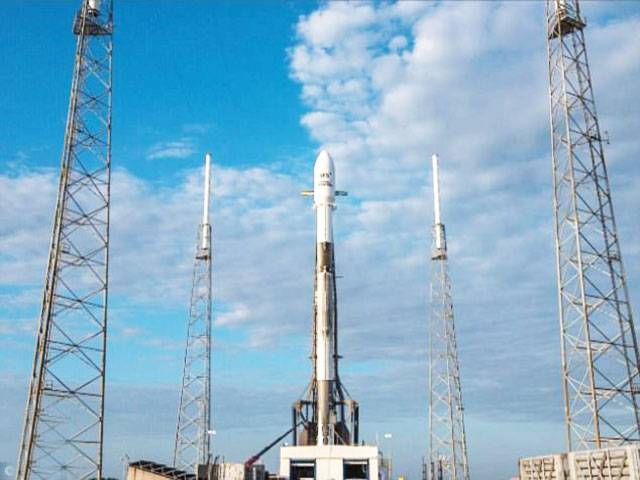Florida-Elon Musk’s SpaceX has fired one of the largest communications satellites ever launched into orbit to provide internet to developing nations. The 5.4-ton (4,900kg/10,800lb) spacecraft, dubbed SES-12, will beam TV, data, and other communications services across the Asia-Pacific region and the Middle East. It was flown beyond Earth’s atmosphere atop one of SpaceX’s reusable Falcon 9 rockets in a launch early Monday morning from Cape Canaveral, Florida.
SpaceX had already used the rocket’s first booster stage to launch the US Air Force’s X-37B Orbital Test Vehicle back in September.
The company flew it for a second time today as part of its goal to use rocket stages multiple times in a bid to cut the costs of its trips to orbit. The booster was not recovered for a second time and was instead allowed to crash into the ocean. Today’s launch was SpaceX’s 56th Falcon 9 rocket flight – the company’s 11th flight this year and its fifth launch for Luxembourg-based telecom company SES. It fired off from Florida’s Cape Canaveral Air Force Station at 5:45am BST (00:45 ET) and successfully deployed the SES-12 satellite 32 minutes after lift-off. ‘SES-12 is a uniquely designed satellite that will allow telephone companies, mobile network operators and internet service providers to deliver more reliable cellular backhaul and faster broadband service,’ SpaceX said in a statement.
From its orbital position, SES-12 will also be pivotal in supporting government efforts to bridge the digital divide through connectivity programs and provide television operators with additional capacity to deliver more content and higher picture quality to meet customer demand.’
The rocket’s first stage was an older Block 4 version of the Falcon 9 rocket, but its second stage was the new Block 5 variant – the latest and final model of the rocket.
Martin Halliwell, chief technology officer for SES, said at a pre-launch press conference last week: ‘The first stage is a Block 4, and the upper stage is a Block 5.’
Praising the Block 5, he added: ‘We get a lot of performance from this vehicle. It’s such a powerful upper stage. That engine is a monster.
‘So five seconds more to burn, a little bit more fuel, and it completely changes the dynamics of the project.’
The latest rocket features numerous upgrades compared to its predecessor, including stronger landing legs, better landing control and improved reusability.
The rocket looks similar to previous Falcon 9 iterations, aside from a new interstage ring, raceway cover and landing legs – which are all painted black.
The black paint is part of the rocket’s new thermal protection system, which makes it highly flame resistant and rapidly reusable.
SpaceX estimates the Block 5’s improved features will reduce launch costs from £45 million ($60 million) to £37 million ($50 million).
The firm launched the Block 5 for the first time on May 11 following a botched attempt the day before in which a flight was aborted less than a minute before lift-off.
The craft, carrying Bangladesh’s first communications satellite, the Bangabandhu 1, blasted off from the Kennedy Space Center at Cape Canaveral in Florida.
Block 5 Falcon 9 is said to be the ‘final iteration’ of the reusable rocket, with potential to handle far more launches than its predecessor, and could one day be used to carry astronauts to space.
Musk has referred to the Block 5 as the ‘finished version’ of SpaceX’s Falcon 9, as it has been designed to endure up to 100 flights in a single lifespan.






